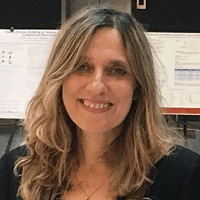AI is Being Used to Discover New Antibiotics and Genes Linked to Disease
The antibiotic, called halicin (named after the HAL 9000 computer from 2001: A Space Odyssey), is believed to be the first discovered with AI. While AI had been applied to parts of the antibiotic-discovery process, the researchers said this was the first time AI had helped to identify a completely new kind of antibiotic from scratch. Led by synthetic biologist Jim Collins at MIT, the paper is published in Cell.
New drugs are needed to fight growing bacterial resistance to antibiotics worldwide, resulting in infections that could kill 10 million people per year by 2050. New drug development has slowed over the past several decades. “People keep finding the same molecules over and over,” stated Collins. “We need novel chemistries with novel mechanisms of action.”

The team identified candidates and also validated promising molecules in animal tests, which Jacob Durrant, a computational biologist at the University of Pittsburgh, called remarkable. He sees the approach able to be applied to drugs used to treat cancer or neurodegenerative diseases, he said.
The MIT team developed a neural network that learns the properties of molecules atom by atom. They trained the neural network to identify molecules that inhibit the growth of Escherichia coli, using a collection of 2,335 molecules. This included a library of some 300 approved antibiotics, and 800 natural products from plant, animal, and microbial sources.
The AI algorithm learns to predict what happens in the molecules without any assumptions about how drugs work, stated Regina Barzilay, an AI researcher at MIT and a co-author of the study. “As a result, the model can learn new patterns unknown to human experts,” she stated.
The MIT team considers the work a proof of concept. They are hoping to partner with an outside group or company to get halicin into clinical trials. It also wants to broaden its approach to find more new antibiotics and design molecules from scratch. “This study puts it all together and demonstrates what it can do,” stated Barzilay.

Elsewhere, researchers are using AI to pinpoint genes that cause diseases.
A research team from Linköping University in Sweden has pioneered a method to locate disease-related genes using AI, according to an account in Digital Journal. The team developed an artificial neural network that revealed patterns across a huge volume of gene expression data.
The technology is expected to help advance personalized medicine, leading to more reliable individual treatment for different conditions.
The team used a data set containing 20,000 genes relating to hundreds of people. The AI was used to assess which gene expression patterns in the unsorted group related to people with diseases, as opposed to those that related to healthy people. In this way, the researchers were able to find patterns of gene expression in new datasets that had been hidden.
“We have for the first time used deep learning to find disease-related genes. This is a very powerful method in the analysis of huge amounts of biological information, or ‘big data’,” stated lead scientist Sanjiv Dwivedi. The research was initially published in Nature Communications.
Researchers at Canadian company Deep Genomics announced last fall they had used an AI deep learning platform to identify a potential treatment for Wilson’s disease, genetic disorder in which excess copper builds up in the body, which had long stumped physicians. The five-year old startup then received a $40 million fresh round of venture funding, according to a recent account in Fortune.
The Deep Genomics team fed a massive amount of data related to more than 200,000 gene mutations into a training algorithm, in the hopes of finding connections between faulty proteins in human DNA which seem to drive certain human diseases. “The AI learned to understand the molecular biology,” stated Deep Genomics CEO Brendan Frey, who did his doctoral studies at the University of Toronto under AI pioneer Geoffrey Hinton and later became a leading researcher in neural networks himself.
Scientists were excited. “It’s a big leap forward,” stated Dr. Fred Askari, director of the Wilson’s Disease Program at the University of Michigan School of Medicine. The entire process took 18 months compared to a more typical development timeline of three to six years. If it could be repeated, which Deep Genomics believes it can be, it could have a revolutionary effect in shrinking the time to discovery of new drugs.





Post a Comment